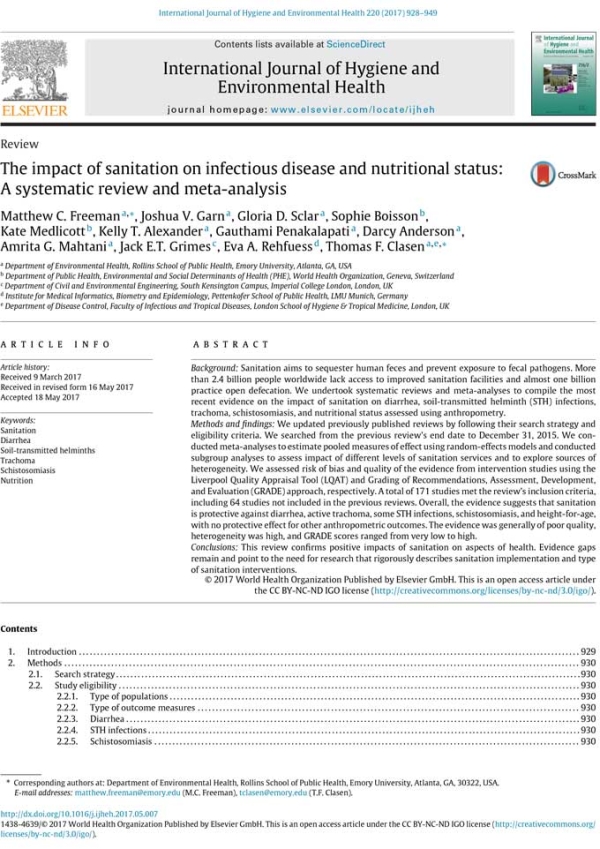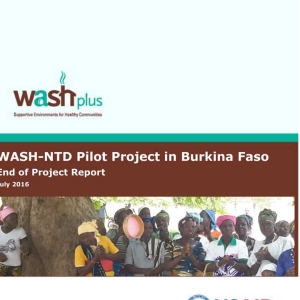The impact of sanitation on infectious A disease and nutritional status: systematic review and meta-analysis
Sanitation aims to sequester human feces and prevent exposure to fecal pathogens. More than 2.4
billion people worldwide lack access to improved sanitation facilities and almost one billion practice open defecation. We undertook systematic reviews and meta-analyses recent evidence to
compile the most on the impact of sanitation trachoma, on diarrhea, soil-transmitted helminth (STH) infections, schistosomiasis, and nutritional status assessed using anthropometry.
We updated previously eligibility published reviews by following their search strategy and criteria. We searched from the previous review’s end date to December 31, 2015. We conducted meta-analyses to estimate pooled subgroup measures of effect using random-effects models and conducted analyses to assess impact of different levels of sanitation services and to explore sources of heterogeneity. We assessed risk of bias and quality of the evidence from intervention studies using the Liverpool Quality Appraisal Tool(LQAT) and Grading of Recommendations, Assessment,
Development and Evaluation (GRADE)approach, respectively. A total of 171 studies metthereview’sinclusion criteria, including 64 studies not included in the previous is reviews. Overall, the evidence suggests that sanitation protective against diarrhea, active trachoma, some
STH infections, schistosomiasis, and height-for-age, with no protective effect for other anthropometric outcomes. The evidence was generally of poor quality, heterogeneity was high, and
GRADE scores ranged from very low to high.
This review confirms positive impacts of sanitation on aspects of health. Evidence gaps remain and
point to the need for research that rigorously describes sanitation implementation and type interventions of sanitation.
Related products
PARTNER

Contact-us
Abidjan – Ivory Coast Cocody Riviera Palmeraie
Tél. : (+225) 27 22 49 96 11 / 27 22 49 96 13 – Email : contact@afwasa.org







